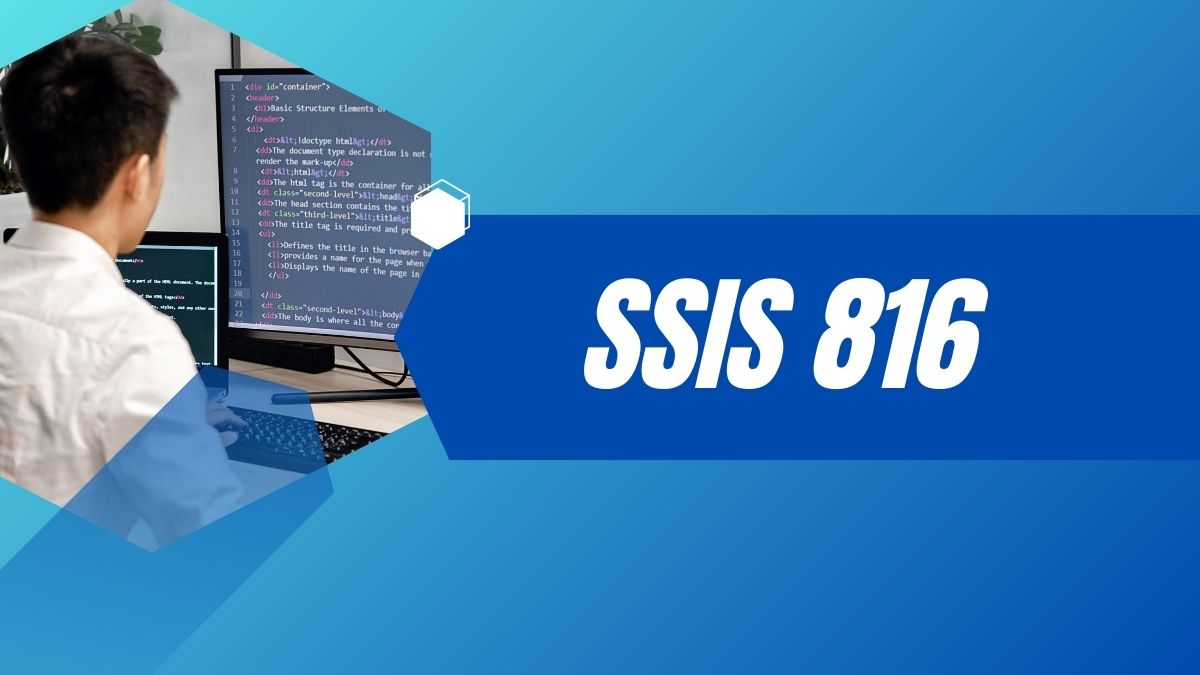For those navigating the landscape of data integration, SSIS-816 offers enhanced performance, scalability, and security. This version provides significant improvements that can simplify processes and boost efficiency, making it a critical tool for organizations managing complex data workflows. Its robust features aim to streamline data handling and ensure higher data quality.
Those looking to optimize their data integration will find SSIS-816 particularly valuable. With functionalities like parallel execution and project parameters, the system enhances not only the speed but also the reliability of data tasks. These features help professionals manage large datasets effectively.
SSIS-816 caters to a wide audience, from novice users to advanced data specialists. With user-friendly updates and advanced configurations, it ensures a smoother experience for all. By leveraging these tools, organizations can expect to navigate their data integration challenges more effectively.
Key Takeaways
- SSIS-816 enhances performance and scalability.
- It includes features like parallel execution and project parameters.
- SSIS-816 is suitable for both novice and advanced users.
Overview of SSIS-816
SSIS-816 is a significant version of SQL Server Integration Services (SSIS) that enhances data integration, processing, and performance. This version introduces advanced features and improved functionalities to handle large datasets efficiently.
Definition and Purpose
SSIS-816 stands for SQL Server Integration Services version 816. It is designed to streamline data integration tasks by providing tools to extract, transform, and load (ETL) data from various sources. This version focuses on optimizing data flow performance, making it more suitable for large-scale data processing.
Key improvements include enhanced connectivity options and better handling of different data sources. These features allow businesses to integrate disparate systems more efficiently, leading to smoother operations and more accurate data analytics. SSIS-816 is particularly valued for its ability to reduce data latency and improve throughput.
The goal of SSIS-816 is to provide more robust and flexible data integration capabilities, making it easier for organizations to manage and analyze vast amounts of data. It aims to address the complexities of modern data environments, ensuring faster and more reliable data processing.
Version History
SSIS has evolved through various versions, with each release bringing new features and enhancements. SSIS-816 is one such milestone, noted for its advancements in performance and functionality. Prior to SSIS-816, earlier versions focused on basic ETL tasks and handling smaller datasets.
Significant changes with SSIS-816 include improved data flow performance. This ensures faster and more efficient data processing. The introduction of advanced features in SSIS-816 has made it a go-to solution for enterprises needing extensive data integration capabilities.
These updates reflect the growing need for robust data management tools in businesses today. SSIS-816 represents a major step forward in addressing these needs and continues to be a critical tool for data professionals.
Core Elements of SSIS-816
SSIS-816 is a powerful tool for data integration and transformation. This section highlights its key architectural components and the data integration flow.
Architectural Components
SSIS-816 is built around a modular architecture. This design helps it handle diverse data sources and destinations efficiently. The central element in SSIS-816 is the package, which acts as a container to manage multiple tasks and workflows.
Data Sources and Destinations are key architectural elements. They define where data comes from and where it goes. Supported sources include SQL Server, Excel files, and XML files. Destinations can range from databases to flat files.
Control Flow and Data Flow tasks are also essential. Control Flow oversees the sequence of task execution, while Data Flow manages the actual data processing and transformation. These components make SSIS-816 versatile and adaptable for various data integration needs.
Data Integration Flow
The data integration process in SSIS-816 revolves around extracting, transforming, and loading (ETL) data.
Extraction involves pulling data from multiple sources, such as databases, spreadsheets, or web services. The extracted data is then passed to the transformation stage.
Transformation modifies the data to fit the requirements of the destination. This could include sorting, filtering, or converting data types.
Loading is the final step, where transformed data is written to its final destination. This could be a database, data warehouse, or a report.
Overall, the data integration flow in SSIS-816 ensures smooth and efficient data processing.
SSIS-816 in Practice
It is used in data integration, helping businesses extract, transform, and load data. It offers various real-world applications in data warehousing, business intelligence, and more. And also emphasizes best practices for optimal performance and security.
Real-World Applications
SSIS-816 excels in several key areas. One major use is in data warehousing, where it extracts, transforms, and loads data from different sources into a unified storage system. This makes it easier to analyze and manage large datasets.
Another application is in business intelligence. Companies can use SSIS-816 to gather data from multiple systems, process it, and create reports that provide valuable insights. It is also used in migrating data between systems, ensuring data consistency and integrity.
In e-commerce, it helps consolidate customer data from various touchpoints like online stores, social media, and email campaigns, enabling better customer relationship management.
Best Practices
Following best practices ensures effective and secure use of SSIS 816. One crucial practice is to store sensitive data, such as connection strings and passwords, in configuration files rather than hard-coding them. This enhances security.
Use the built-in logging features to monitor package execution and troubleshoot issues quickly. Logging helps in identifying and rectifying errors efficiently.
Employing proper data flow management is key. This includes breaking down complex packages into smaller tasks and using parallel processing to improve performance. For instance, make use of multiple data flow paths to handle large volumes of data faster.
Optimize your packages by properly configuring memory settings and using fast-loading techniques like bulk inserts. Also, regularly review and update your SSIS packages to ensure they meet the latest data integration requirements.
Advanced Topics
It offers several sophisticated features for boosting performance and enabling customizations. This includes specific techniques for optimizing data flows and creating bespoke extensions for enhanced functionality.
Performance Tuning
Performance tuning in SSIS 816 is vital for efficient data processing. One important method is parallel execution, which optimizes the performance by using multiple processors. This can be achieved by setting the MaxConcurrentExecutables property.
Another key aspect is buffer size configuration. Adjusting the size of data buffers can have a significant impact on speed. The default buffer size might not be optimal for all scenarios, so tuning it based on the data volume and memory availability is crucial.
Furthermore, indexing source and destination tables can drastically reduce query time by improving how data is retrieved and written. It’s also beneficial to utilize the Data Flow Task for numerous transformations since it’s designed for high performance.
Customizations and Extensions
It allows for extensive customizations and extensions to suit specific business needs. Script tasks and script components enable developers to write custom code using C# or VB.NET, facilitating more complex data manipulations and workflows beyond built-in components.
Integration with third-party APIs and services can be achieved through custom connectors. This expands the tool’s reach, enabling connections to various data sources and applications not natively supported by SSIS.
Additionally, developers can create custom components using the SSIS API. These components can be reused across multiple packages, ensuring consistency and saving time in development. Using these tools, organizations can tailor to their unique data integration requirements, enhancing both functionality and efficiency.




